No matter where you live in the world, everyone should have a battery-powered or self-powered (hand-crank) portable radio in their home.
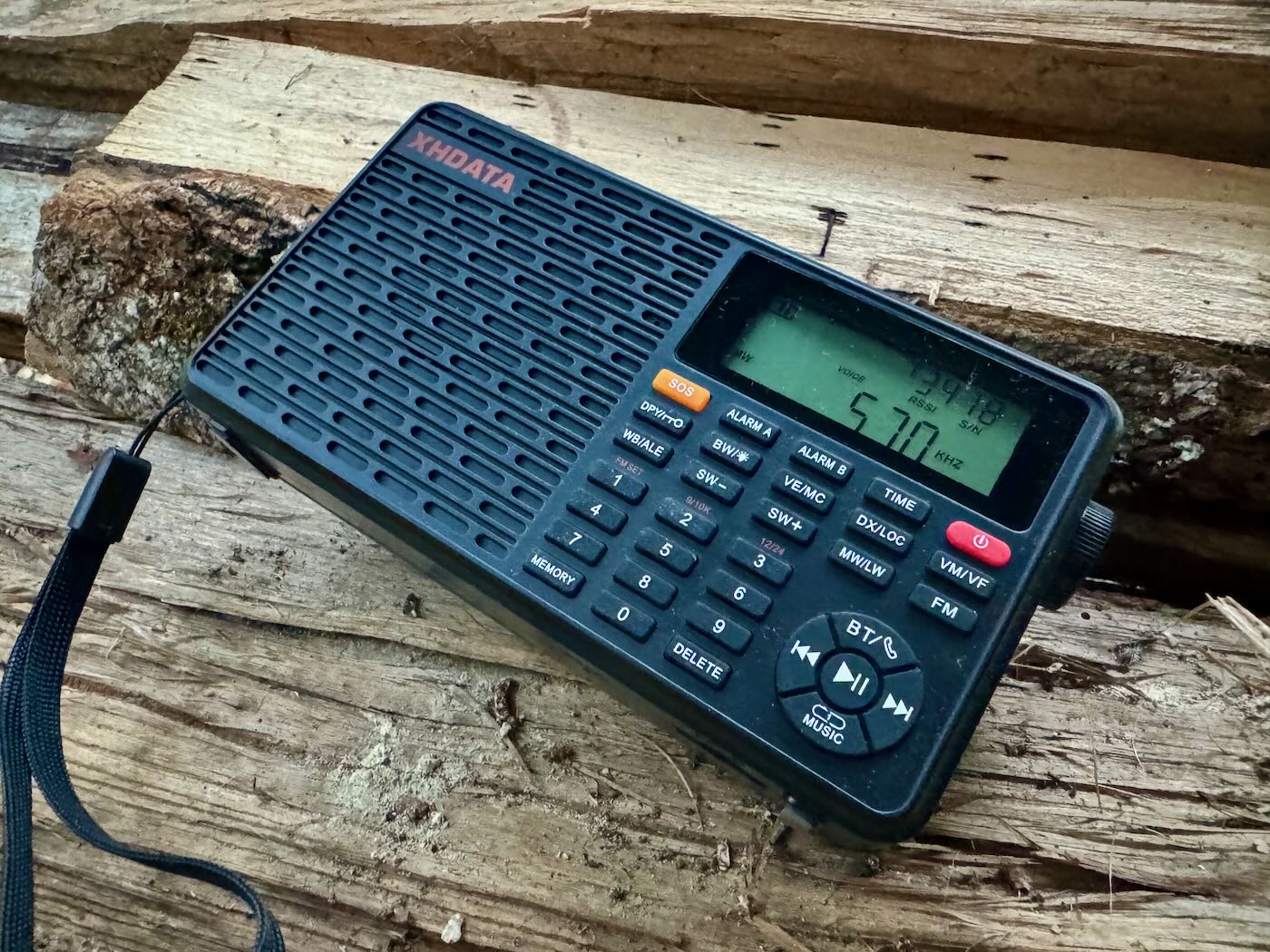 Recently, the pace of articles here on the SWLing Post has slowed down. That’s because I live in Swannanoa, North Carolina—a town that was particularly hard-hit by Hurricane/Tropical Storm Helene, which brought unprecedented rainfall and caused widespread destruction.
Recently, the pace of articles here on the SWLing Post has slowed down. That’s because I live in Swannanoa, North Carolina—a town that was particularly hard-hit by Hurricane/Tropical Storm Helene, which brought unprecedented rainfall and caused widespread destruction.
As I’ve mentioned in a previous post, I’ve been chronicling my experiences on my ham radio blog, QRPer.com. I’ve also been sharing regular audio updates with supporters on Patreon.
In short, our rural mountain community was completely cut off for several days. Our bridge washed out, and a critical section of road crumbled daily.
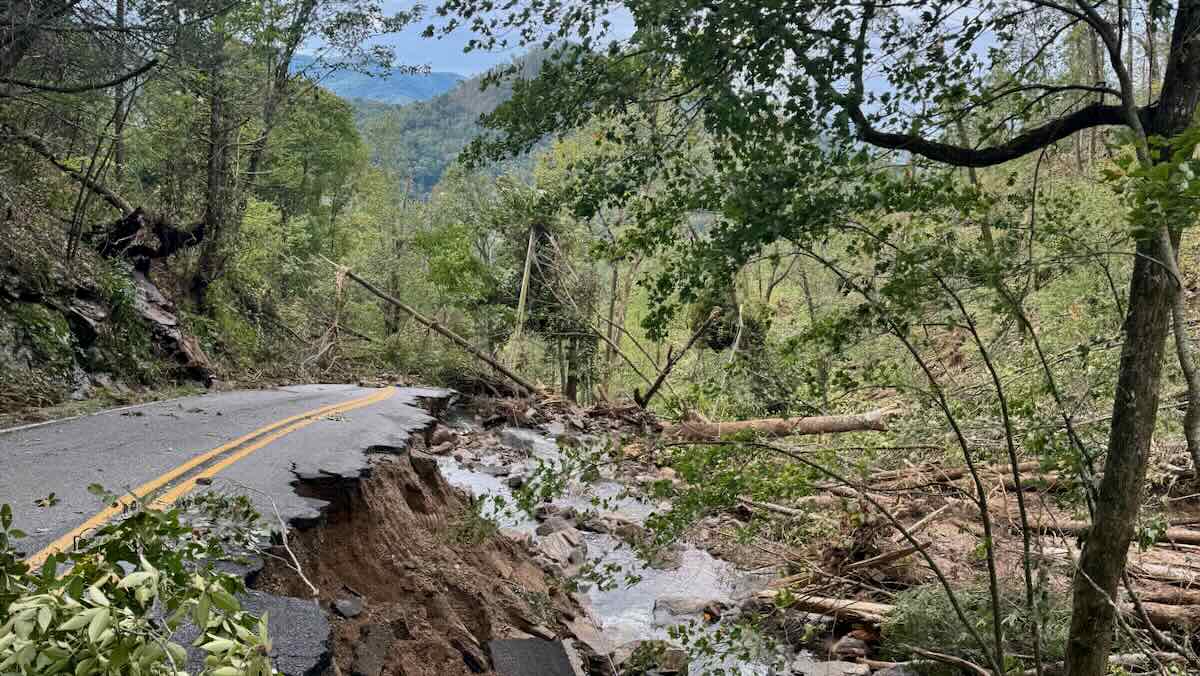 At one point, two families had to be helicopter-evacuated for medical reasons, and less than a week after the storm, the Sheriff’s department came door-to-door recommending evacuation.
At one point, two families had to be helicopter-evacuated for medical reasons, and less than a week after the storm, the Sheriff’s department came door-to-door recommending evacuation.
Our amazing community pulled together: we cleared our road of hundreds of downed trees and made sure everyone had food, water, and supplies. We took care of each other.
Now, things have improved dramatically. After two and a half weeks without power, we’ve been reconnected to the grid. The Kentucky Department of Transportation repaired our road, making it accessible to regular vehicles again. On Tuesday, an arborist crew finally made it up the mountain to remove fallen trees from houses.
Although things are starting to feel more normal at home, the impact on Swannanoa, Asheville, and surrounding areas has been profound. Entire neighborhoods are gone, numerous businesses have closed, and several grocery stores were severely damaged.
The Communications Void
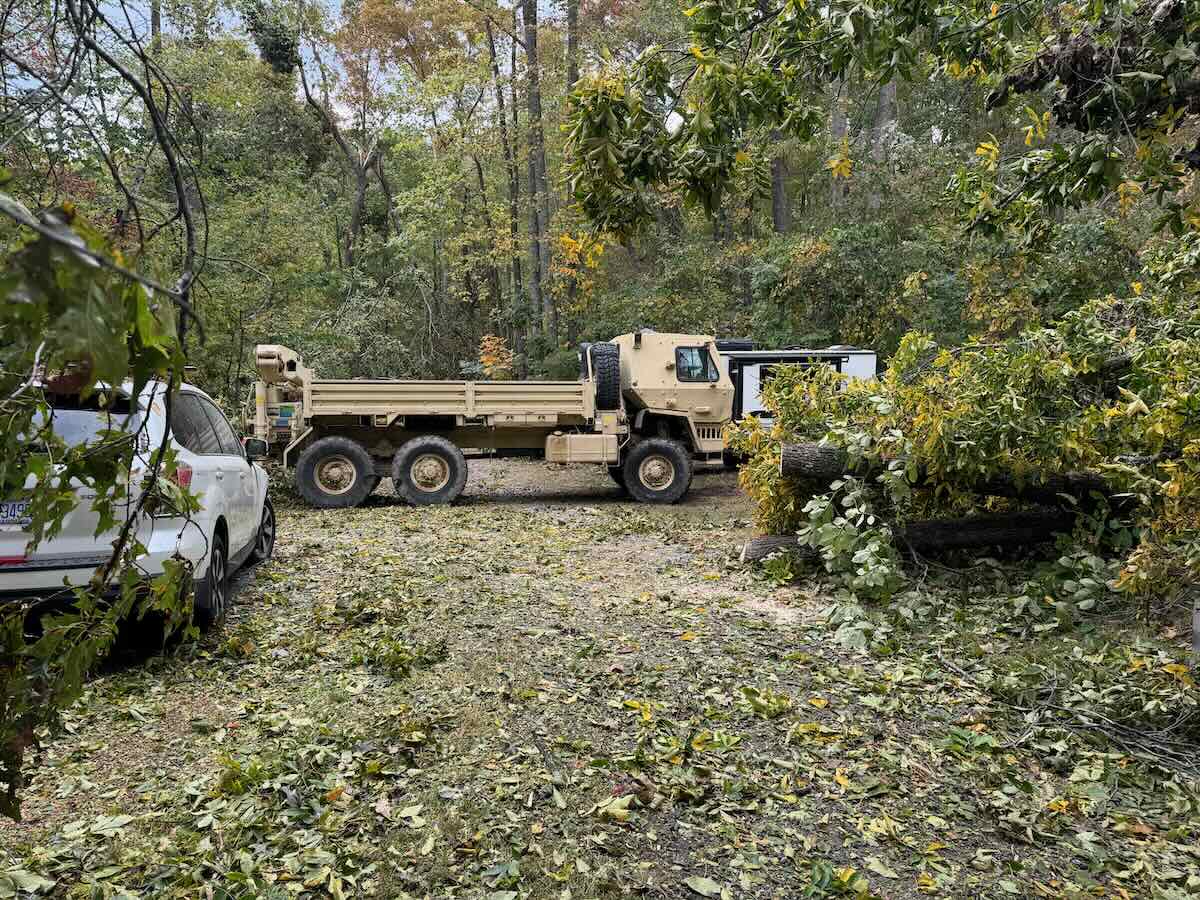
The National Guard helped us for a full day at our home. Thank you 5th Battalion 113 Field Artillery!
It’s often said that modern communications infrastructure fails us after a disaster.
I can confirm, first hand, that this is true.
The mobile phone network went offline during the storm, leaving us without service for days. Even now, three weeks after the storm, mobile phone service remains unreliable. Calls drop every few minutes.
Mobile data services at home are still down at time of posting (October 18, 2024). Internet services like cable, fiber, and DSL are mostly still out across the county. Only those with satellite internet have a connection—I’m fortunate to be one of them. Our cell tower still only supports basic voice calls and text messaging, without data or media attachments.
Radio to the Rescue
As many of you know, I’m not just a radio listener, but also a licensed amateur radio operator, and both of these hobbies became essential post-Helene.
As highlighted in an article by WIRED, amateur radio proved to be our lifeline for communication when everything else failed.
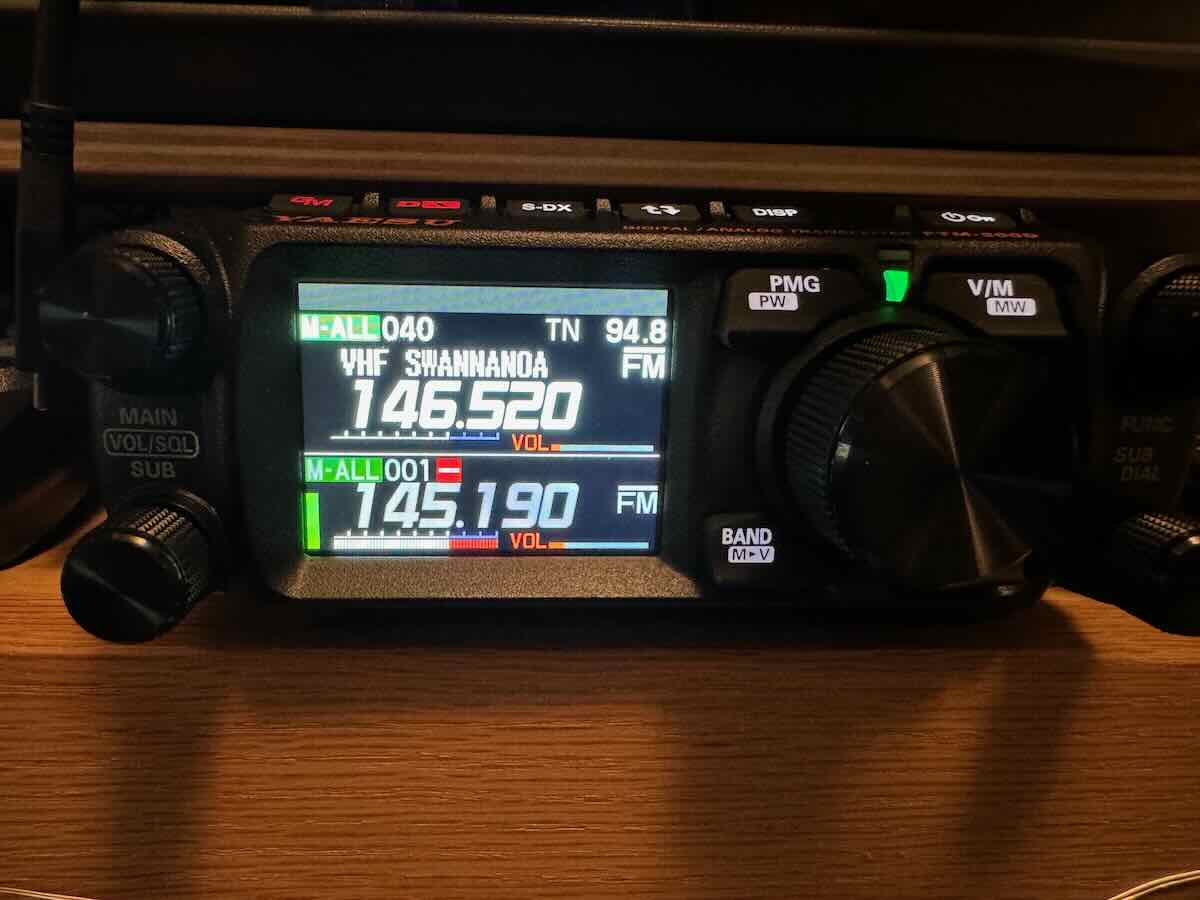 Using the local repeater (N2GE on Mount Mitchell), I was able to pass wellness checks, coordinate helicopter evacuations, and arrange supply drops for our community. I handed out a few handy talkies to unlicensed neighbors so we could stay in touch.
Using the local repeater (N2GE on Mount Mitchell), I was able to pass wellness checks, coordinate helicopter evacuations, and arrange supply drops for our community. I handed out a few handy talkies to unlicensed neighbors so we could stay in touch.
My wife and daughter, who are also hams, helped tremendously. While I was out with a chainsaw, clearing driveways, they acted as net control operators on our community’s simplex frequency (147.555 MHz), passing critical messages.
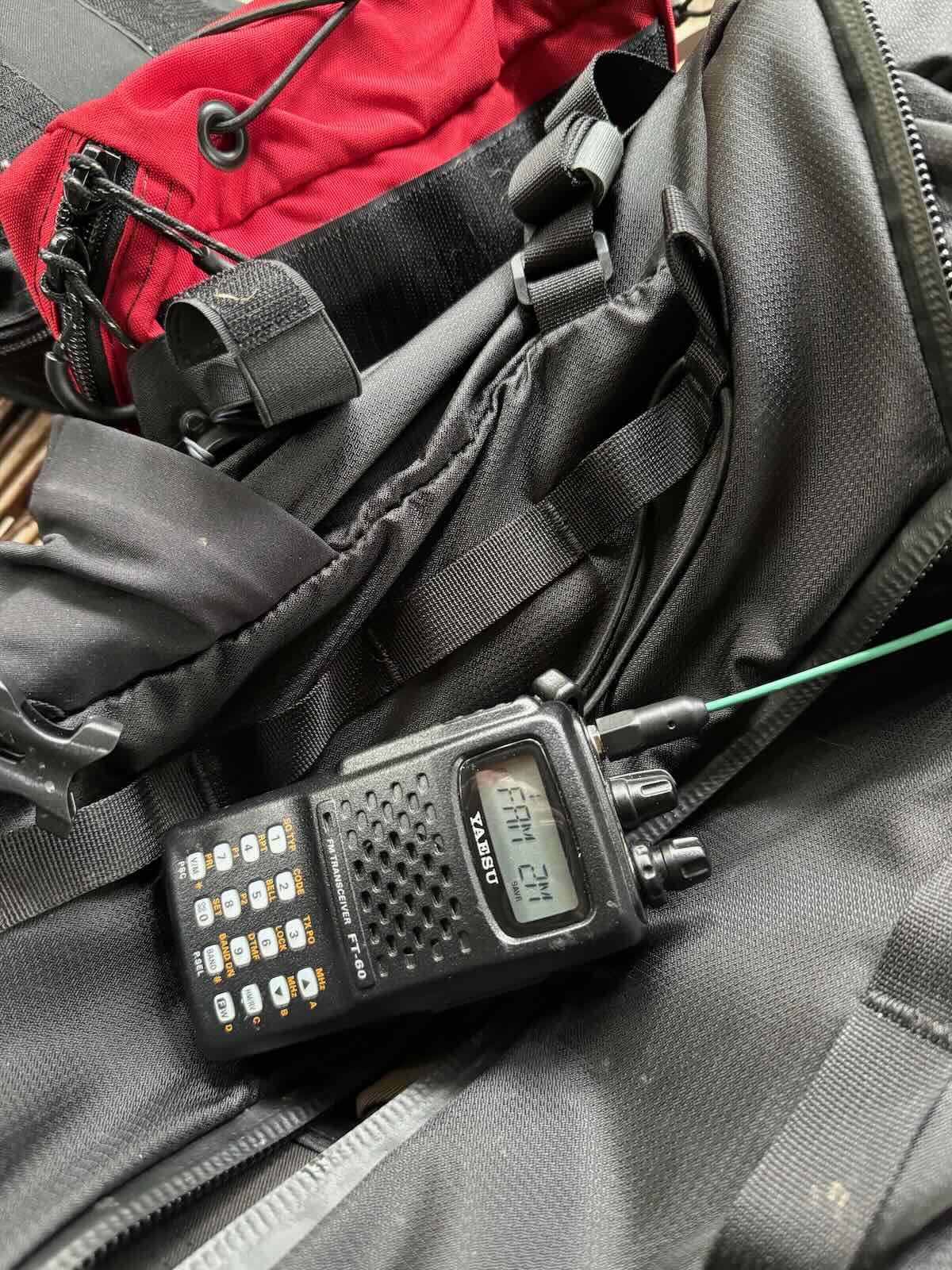 For that first week especially, amateur radio truly was our community’s connection to the outside world.
For that first week especially, amateur radio truly was our community’s connection to the outside world.
AM/FM Radio: A Lifesaver
Fortunately, our local TV station remained online after the storm, but few people could access it. Many people rely on cable or internet to watch TV, and in areas like ours, the digital transition over a decade ago left many without the ability to pick up over-the-air signals.
In contrast, FM and AM radio became the most reliable sources of information. Here in Buncombe County, public information and news were broadcast on 99.9 MHz (FM) and 570 kHz (AM). Both stations stayed online throughout the disaster, and the information they provided reached a vast audience. Check out this feature from CBS Evening News:
In Henderson County, the local AM station WTZQ stepped up as well. They did incredible work serving their communities post-Helene, as highlighted in a report by Queen City News:
Information Lifeline
As a presenter in the above story pointed out, everyone should have a battery-powered (or self-powered) AM/FM/Weather radio in their home.
After a disaster, you’ll rely on that radio for essential updates like where to find clean water, how to apply for FEMA assistance, what businesses are open, and when services will be restored.
Even three weeks after the storm, much of the Asheville area is still without water, so radios remain vital for getting updates.
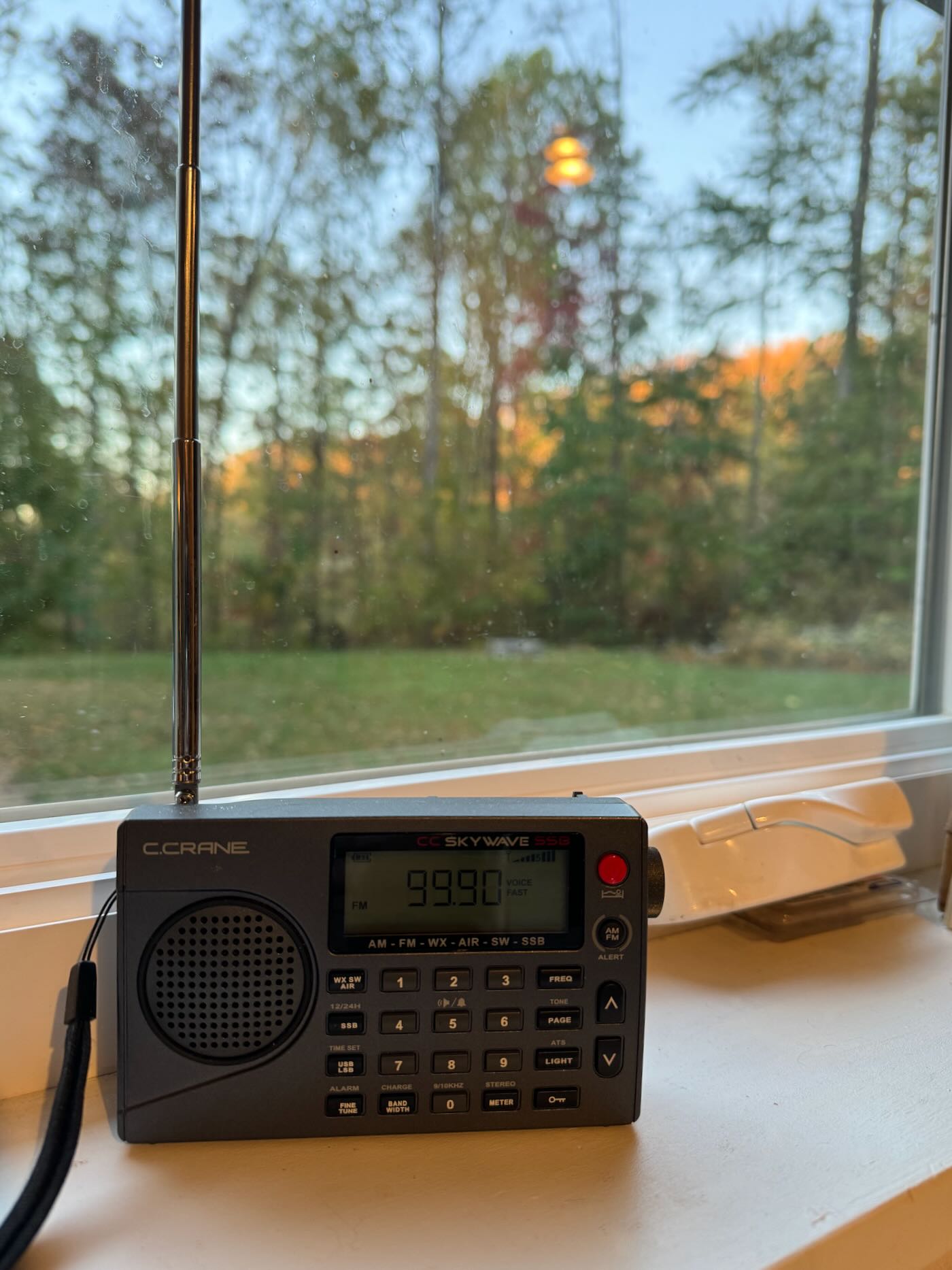 Here at SWLing Post HQ, I shared my extra portable radios with neighbors who needed them. I used my CC Skywave SSB 2 in the kitchen window to tune into local news on 99.9 MHz and 570 kHz. I also relied on my XHDATA D-109 and CC Radio 3—they became our constant companions for information.
Here at SWLing Post HQ, I shared my extra portable radios with neighbors who needed them. I used my CC Skywave SSB 2 in the kitchen window to tune into local news on 99.9 MHz and 570 kHz. I also relied on my XHDATA D-109 and CC Radio 3—they became our constant companions for information.
Many of you here on the SWLing Post are already radio enthusiasts, so no doubt I’m preaching to the choir. But let this serve as a reminder to stock up on alkaline batteries and check your radios regularily to make sure they’re fully functional. Keep spares on hand so you can lend them to neighbors if needed—they’ll never forget your generosity.
And don’t assume your area is safe from natural disasters. Western North Carolina was considered one of the safest regions in the country for weather, yet we were hit by one of the most devastating storms in state history.
Stay prepared. Don’t become complacent.
Thank You!
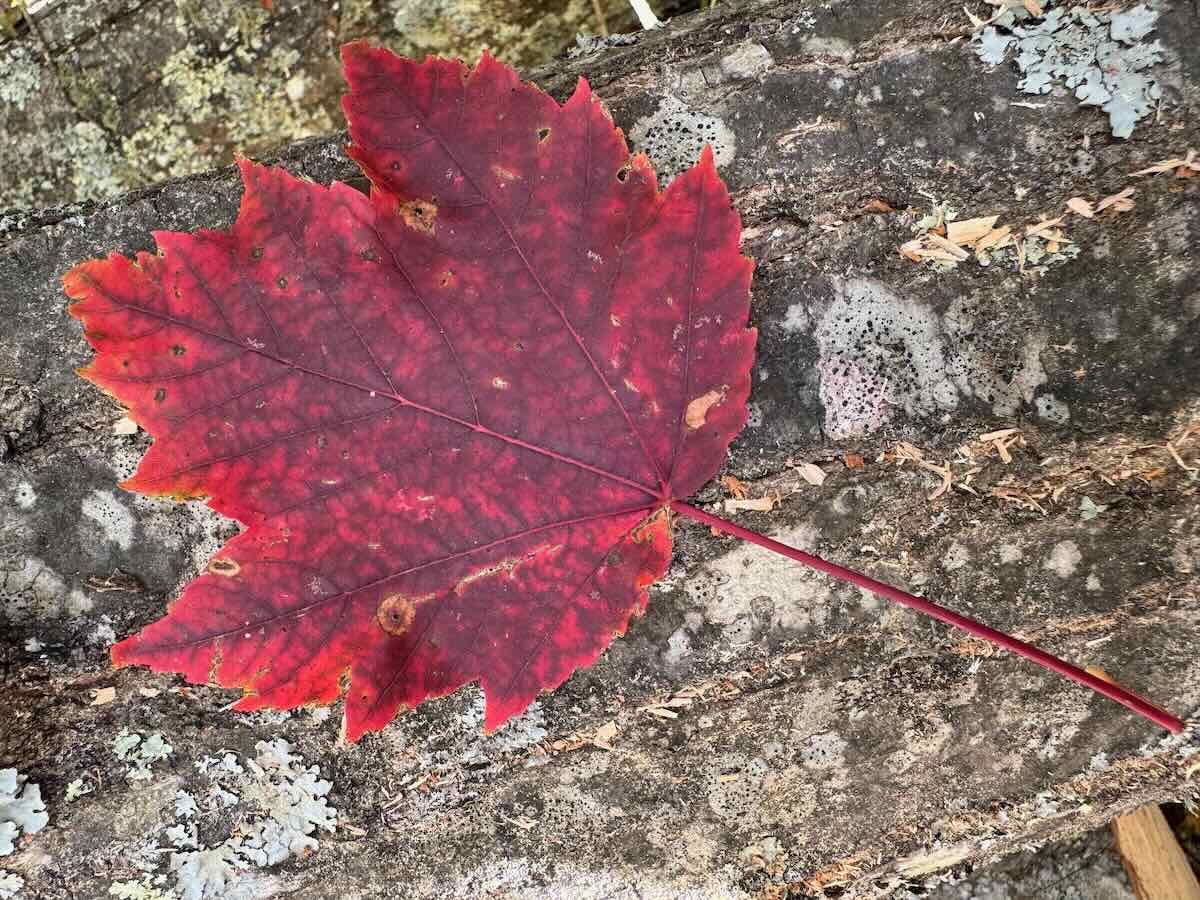 Over the past few weeks, many of you have reached out with kind words and support, and I can’t thank you enough!
Over the past few weeks, many of you have reached out with kind words and support, and I can’t thank you enough!
As of this morning, I have 310 messages in my inbox.
I’ve been too busy to reply to emails and comments—though I’ve read each one—but I truly appreciate your patience as I try to catch up. My days have been consumed by helping neighbors and getting our own life back in order. It’s been exhausting but incredibly rewarding, and we still have months of work ahead of us.
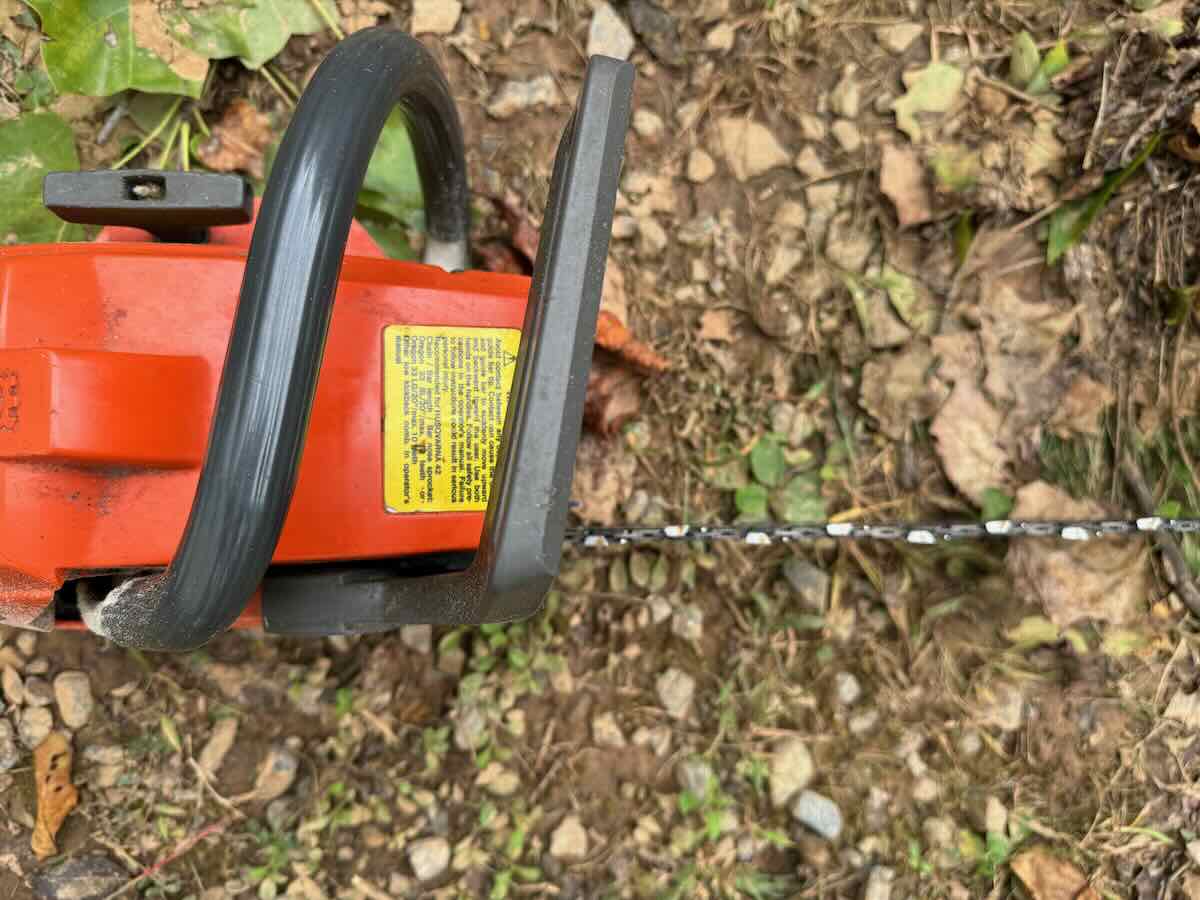 Thank you also to the contributors who have kept the SWLing Post running during my absence, and a special shout-out to my friend Vince (VE6LK), who has taken on a huge role in keeping QRPer.com updated.
Thank you also to the contributors who have kept the SWLing Post running during my absence, and a special shout-out to my friend Vince (VE6LK), who has taken on a huge role in keeping QRPer.com updated.
Again, I’ve been posting updates on QRPer.com and sharing more informal audio updates on Patreon.
Thank you so much for your support and understanding—and, again, keep those radios ready. You never know when they’ll become your primary source of information!
Best & 73,
Thomas (K4SWL)

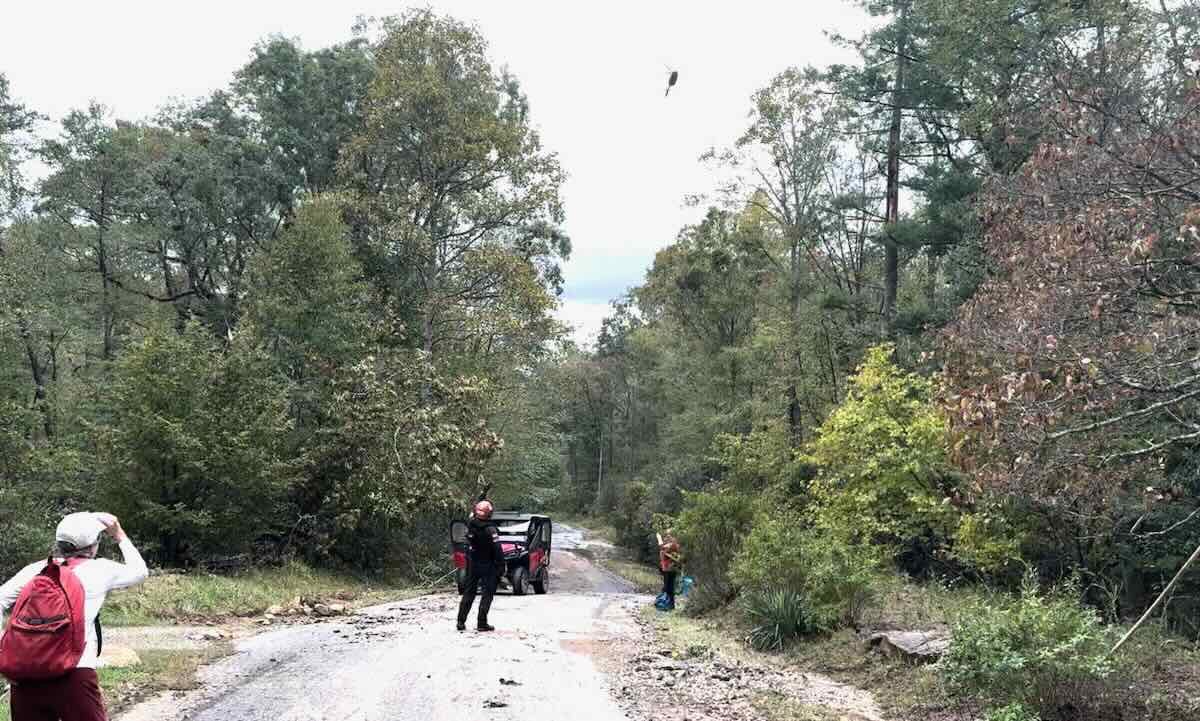
you convinced me to buy a short-wave radio and you got me interested in HAM radio. What is the step I need to take to get started in HAM radio. Thanks! Pete
That’s great to hear, Pete! To get started in ham radio you’ll need to get a license. In the U.S., that begins with the Technician exam. Here are some good resources:
– ARRL “Getting Licensed”: https://www.arrl.org/getting-licensed
– HamStudy (practice tests/flashcards): https://hamstudy.org/
– QRZ.com practice tests: https://www.qrz.com/hamtest/
You can also find a local club (great for mentoring and testing): https://www.arrl.org/find-a-club
Once you pass, you’ll get your own call sign and can start with an entry-level handheld radio, then branch out into HF gear later. It’s a fun journey — welcome to the community!
Thank you for the article. I have enough radios available, but your comment on making sure enough batteries are on hand has made me realize that on that point I have fallen behind.
I’m glad you and your family are okay. This article shows how crucial radio is in a disaster.
Thomas, I read your horrendous story on the plane coming down from my remote home in Masset, Haida Gwaii. It was very moving, to say the least. I’m just so happy that you and your family are safe. Looks like you’ll have many months of rebuilding, always with your trusty radios at your side. Stay safe!
I’m very tempted to get my Ham ticket after reading this as the effort opens up an important means of communication that I don’t currently have. Simple VHF technology can be a lifesaver as you demonstrate. I also like your idea of having several receivers around that you can loan to your neighbors. That’s the kind of gesture that can build communities in an increasingly isolated world. Thanks for taking time to update us all.
Don,
I also note that Thomas loaned two-way radios and ran regular, scheduled, welfare “nets” to make sure folks were doing OK. I think that, too, is a great idea.
Cheers, Jock
Remember the vehicle has a large capacity battery and an AM/FM radio which can operate for many hours without running the engine. Also they often have either a USB socket or a 12 V socket for which you can buy an adaptor for USB for charging phones or rechargeable batteries.
Yes, most neighbors used their vehicle to charge devices and listen to the radio when their generators weren’t running.
A siren is installed at the bush fire station which is manned by volunteers in most of Australia. It only works in very small villages because most people live on their own block rather in the centre of the village area.
Some fires rage over hundreds of square kilometres. So in many cases an acoustic alarm will not be heard.
The Commonwealth Government funded Australian Broadcasting Corporation is the emergency broadcaster which uses its “Local” radio station which can cover thousands of square kilometres using multiple AM or FM transmitters will transmit emergency warnings. Generally they tell you how to get away from danger and which roads are blocked. These warnings are on the quarter and three quarter hour with news bulletins on the hour and half past the hour.
Nope. The ABC in Australia are left wing morons who dismantled radio Australia’s shortwave service due to pig ignorance and political insanity. Australia has vast areas of land that have no AM or FM analog MW coverage at all and to suggest that regular AM and FM broadcasting with limited hookup is somehow a solution to greater ABC coverage is just laughable. Satellite is unreliable and only HF offers the best and most reliable coverage for radio broadcasting in outback and remote areas of Australia and the pacific as well.
There is a reason why Australia makes some of the worlds best HF transceivers – Barrett and Codan – and that is because of a need for reliable long range comms over barren and inaccessible areas. HF works where AM/FM MW and satellite broadcasting fail.
Even the Kiwis (New Zealanders) have more sense than the Australian government by expanding and upgrading their shortwave service RNZ as they know it’s a vital service for local and remote areas and the pacific.
It was not a left wing ABC which closed HF broadcasting. The then Managing Director came from Google and replaced 6 old high powered Radio Australia HF transmitters and 3 domestic HF transmitters with a DAB+ radio transmitter each in Hobart, Canberra and Darwin.
There was no consultation in Northern Australia. This Managing Director was sacked.
The ABC has never run their own transmitters, they have always been subcontracted.
The ABC’s explanation is that there is the Viewer Accessed Satellite Television carries all remote and national ABC programs. It uses the geostationary satellite so it cannot be used whilst mobile in vehicles or boats.
Like the BBC, the ABC thinks that all broadcast can be replaced by streaming using the mobile phone and National Broadband Network. Not only is a large proportion of the remote areas of Australia have no live terrestrial radio, they don’t have mobile phone coverage. Neither satellite phones and phone base stations in remote villages can carry radio streaming.
I’m sure having a neighbor like you is a blessing anyway, when disaster strikes 10x more. 🙂 Giving a little communication lifeline to someone in dire need of hope can mean so much. Glad to hear recovery is making progress!
Thank you so much my friend. 🙂
An excellent article on the importance of preparedness and the value of analog broadcasting & ham radio in times of natural disaster.
Nice to see the trusty Yaesu FT-60 being used – a rugged workhorse of a HT.
It is a bullet-proof HT! 🙂 Thank you!
Way to go, Thomas!
In my view, this has been a shining moment for broadcast radio for gathering information and ham radio for maintaining community connections, getting help, and dispatching help.
I’m glad you and yours — and your extended community — are safe.
And three cheers for those who restored power and restored roads.
Cheers, Jock
Thank you so much, my friend!
Another reason not mentioned, is the importance of land-line telephone service! When everything comes to the common denominator, analogue still RULES..!
That is so true in many circumstances, but unfortunately not in our case. The telephone lines were all on the ground, poles washed into rivers and the infrastructure completely demolished by this storm in our community. They’re trying to re-build the infrastructure now, but I imagine they won’t even bother replacing the copper lines on our road. It also completely washed away our CO (central office) so that must be replaced as well.
..this natural disaster should have of happened in Putin’s Russia, not the good ‘ol USofA..!
I don’t know about the USA, but in Australia all landline phones are digital either carried on fibre optic, fibre to the node then onto copper wire using VDSL. In less populated areas it is either fixed wireless or geostationary satellite called ‘SkyMuster’ are used.
A DSL landline phone plugs into a modem and the signals travels on one of the above systems to the telephone system via an internet provider.
It should be noted that the phone and modem must be fed with battery backed up power along with the interface to the fibre connection. If fibre to the node is used, the node which is within 900 m is powered from the electricity supply in the street. Similarly for fixed wireless and Skymuster the subscriber’s tranceiver must be back up powered. It is up to the telco if the fixed wireless and satellite base stations to have backup electricity. At the telephone exchange end of fibre optic cabling the equipment will have to be supplied by a generator.
Thomas, Thank you for this write up. This is an excellent real-world account with specific examples. Often articles about the benefit and necessity of radio in a disaster doesn’t hit home as the examples are too vague, or even too grandiose (SHTF apocalyptic events). The way you broke this down provides great examples of how different types of radios can be used in a natural disaster and how it truly helps a community. I will be sharing this article with friends and family, I think it will be very eye opening and useful for many.
Glad you and family are doing well and life is returning to some form of normalcy, even if there is still a lot to do.
Thank you, Marty!
Thomas, thank you for the report and happy to hear that the situation is improving
Just a couple notes, if I can, don’t get me wrong, I’m not pretending to teach you how to deal with the situation there, I’d be an idiot (at best), yet…
Consider the idea to ask your community (because that’s what it IS) to make an order for some handheld RTX and some receivers, the RTX may be whatever may fit, be those PMR446 or “CB radios” or whatever, as long as they fit the need they’ll be ok, same goes for the receivers, no need for high end SWLing stuff, just something which will have the needed requisites will do
Placing such “batch orders” may and probably will allow to obtain some discount, and once the radios will be there, each “spot” belonging to the community will have the ability to listen to alerts/news and to use the RTX to communicate with others, eventually add some “emergency antennas”, something to be quickly deployed when need arises and you’ll have an infrastucture which may be of help if whatever emergency arises
And then… who knows, maybe someone will decide to get a Ham license or get hooked and become an SWL 😀 !
Actually, we’re planning to get commercial frequencies and channelized DMR handy talkies throughout our community so that everyone can be in touch moving forward (we’re even considering a repeater).
Thomas: Go for it!
What you have done and plan to do with comms is exactly what was done in Butte County, CA. Here’s their story: https://www.youtube.com/watch?v=aZiSC4sgKYw
Your approach is also advocated by Radio Relay Int’l as the Neighborhood Radio Watch program. Check it out here: https://radiorelay.org/hamwatch/ The Files section has a lot of good information.
As a side note, my company has a plant in Black Mountain. The plant is mostly OK, the 400+ employees are safe, but some have lost everything. We sent several bins of clothing, contracted a water tanker, and are sending money. A donation portal has been set up for the MANNA FoodBank, which lost their warehouse due to flooding.
73,
Bob WB2VUF
Are you going to use solar powered batteries or what?
Dear Thomas,
As you may know, in May of this year we were hit in Rio Grande do Sul, Brazil, by catastrophic rains that devastated several municipalities and flooded entire neighborhoods in Porto Alegre, where I live, including my own neighborhood.
Fortunately, because I live in a higher area, I wasn’t hit by the flood, but I did experience power outages and communications blackouts. It’s interesting to note that even though we live in different countries and in different geographies, our conclusions about the importance of radio are the same. We’ve confirmed in practice what we already knew beforehand.
If you look at my recent illustrated radio listening reports, the weather theme has been a trademark. Extreme weather events are happening all over the world. And that’s why we need to always be prepared, because the tendency is for these weather events to become more frequent and more violent.
I hope that you and your neighborhood return to normal as soon as possible and thank you for sharing such important information with us.
Best wishes from Brazil.
Thank you so much my friend!
In Sweden we are all told to tune into a certain channel for official information should we hear the siren. We are all expected to have a FM receiver at home.
Excellent!